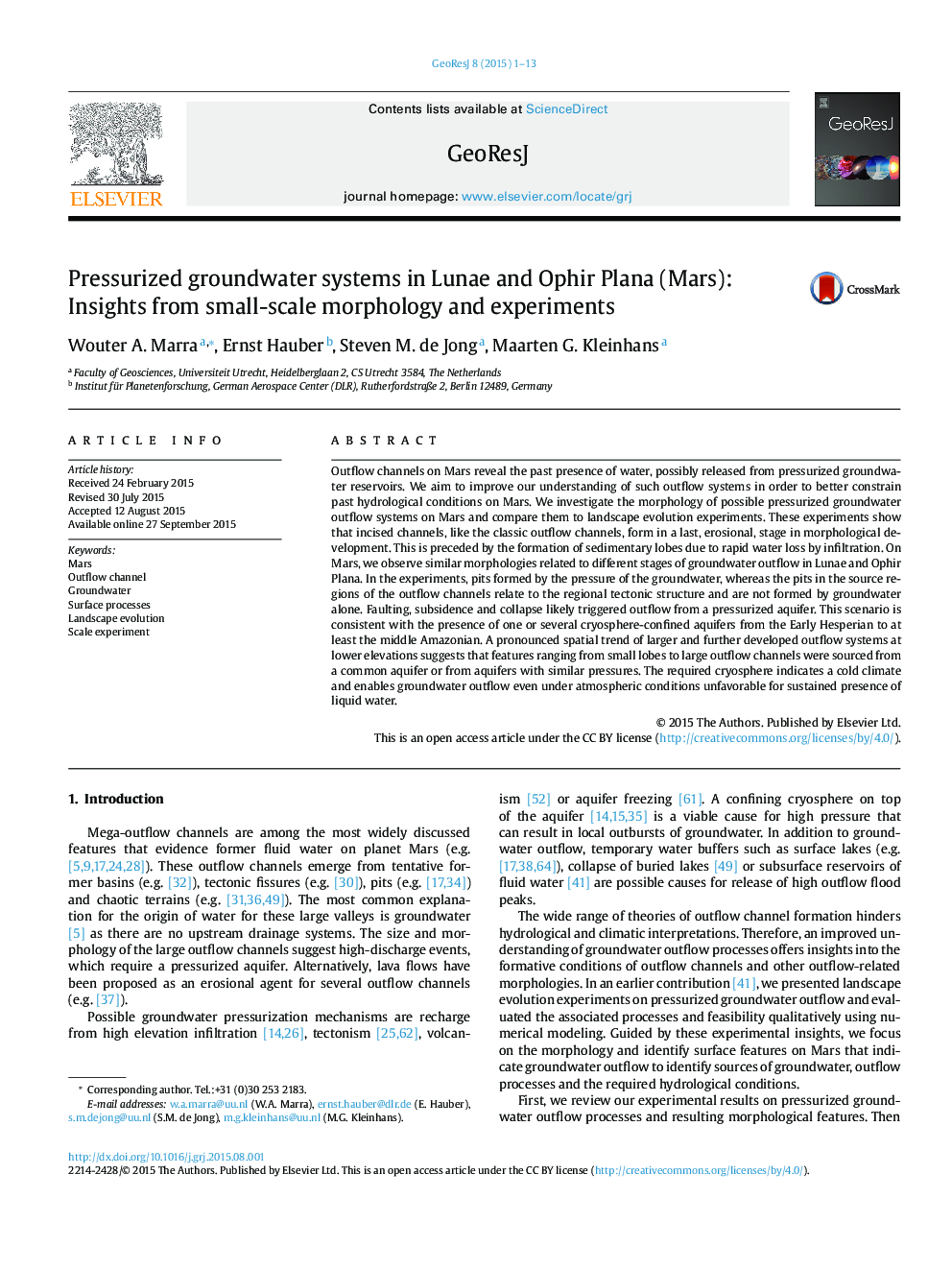| Article ID | Journal | Published Year | Pages | File Type |
|---|---|---|---|---|
| 6426565 | GeoResJ | 2015 | 13 Pages |
Outflow channels on Mars reveal the past presence of water, possibly released from pressurized groundwater reservoirs. We aim to improve our understanding of such outflow systems in order to better constrain past hydrological conditions on Mars. We investigate the morphology of possible pressurized groundwater outflow systems on Mars and compare them to landscape evolution experiments. These experiments show that incised channels, like the classic outflow channels, form in a last, erosional, stage in morphological development. This is preceded by the formation of sedimentary lobes due to rapid water loss by infiltration. On Mars, we observe similar morphologies related to different stages of groundwater outflow in Lunae and Ophir Plana. In the experiments, pits formed by the pressure of the groundwater, whereas the pits in the source regions of the outflow channels relate to the regional tectonic structure and are not formed by groundwater alone. Faulting, subsidence and collapse likely triggered outflow from a pressurized aquifer. This scenario is consistent with the presence of one or several cryosphere-confined aquifers from the Early Hesperian to at least the middle Amazonian. A pronounced spatial trend of larger and further developed outflow systems at lower elevations suggests that features ranging from small lobes to large outflow channels were sourced from a common aquifer or from aquifers with similar pressures. The required cryosphere indicates a cold climate and enables groundwater outflow even under atmospheric conditions unfavorable for sustained presence of liquid water.
